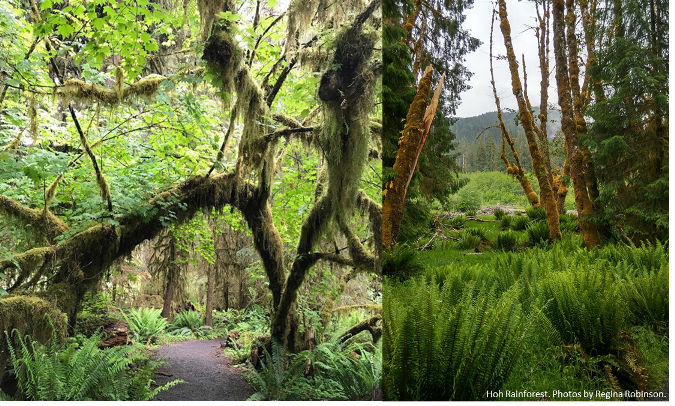
Author Regina Robinson explores a new topic each month in her "Did You Know?" series, which comes out in the Olympia Branch Newsletter.
The Hoh Rainforest, reminiscent of a land before time, receives between 140 and 170 inches of rain a year. Some of the trees that live here are over 1000 years old. The Hoh River Valley was formed thousands of years ago by glaciers.
The Hoh Rain Forest is a prime example of a temperate rainforest. It is one of four rain forests located on the Olympic Peninsula, and it is has been awarded the distinction of being both a World Heritage Site and a Biosphere Reserve by UNESCO. Its unique ecosystem has remained unchanged for thousands of years and it is now the most carefully preserved rain forest in the northern hemisphere.
The most common types of trees that grow in the Hoh Rain Forest are Sitka Spruce, Western Red Cedar, Douglas Fir, and Western Hemlock (Washington's official state tree), which can reach over 300 feet high and seven feet in diameter. Most of the trees are covered with huge clumps of hanging moss and ferns. Moss is an epiphyte, which is a plant that grows on another plant without harming it (as opposed to a parasite). Epiphytes get their moisture and nutrients from the air, rain, fog, and debris that accumulates around them.
Hoh Rain Forest Entrance Cost: none
State Parks near the Hoh Rain Forest: Bogachiel
State Parks Admission: Discover Pass is required, $10 for one day, $30 for one year
When to Visit: The Hoh Rain Forest is open daily April - November, weekends only December - March, camping and hiking is accessible year round
Access: Road to the Hoh Rain Forest is open year round
 Regina Robinson
Regina Robinson